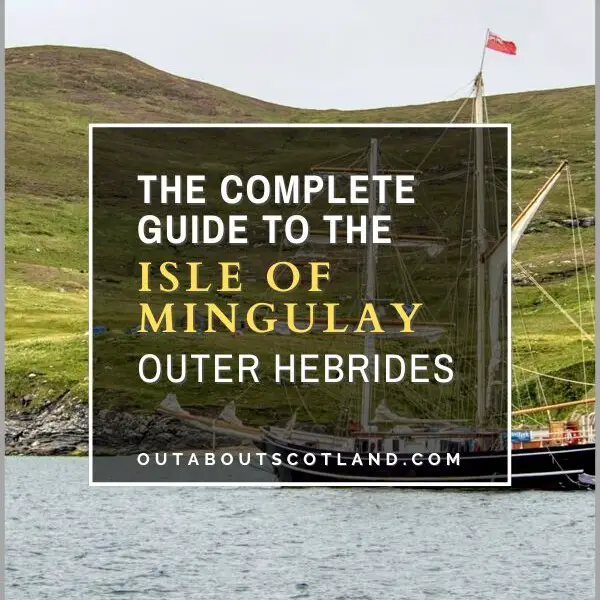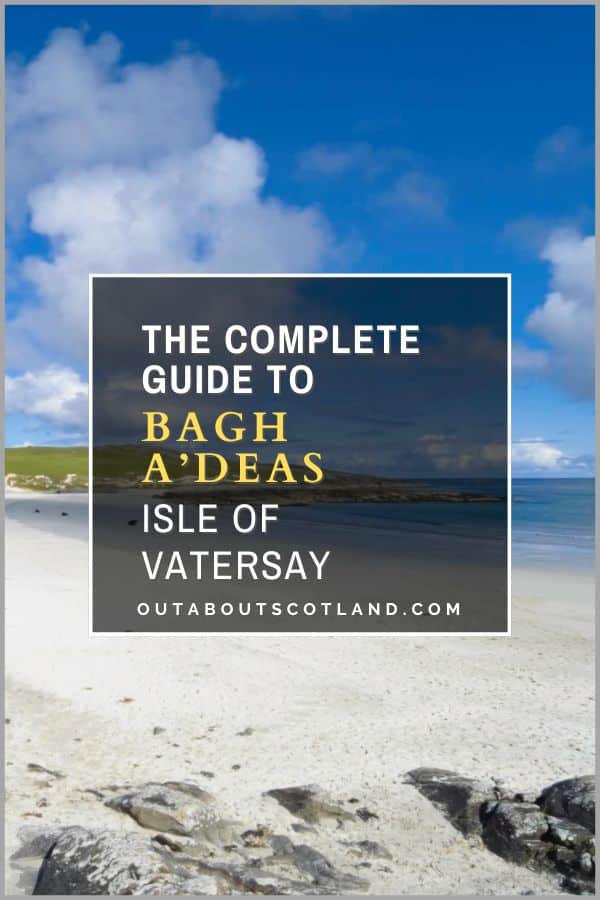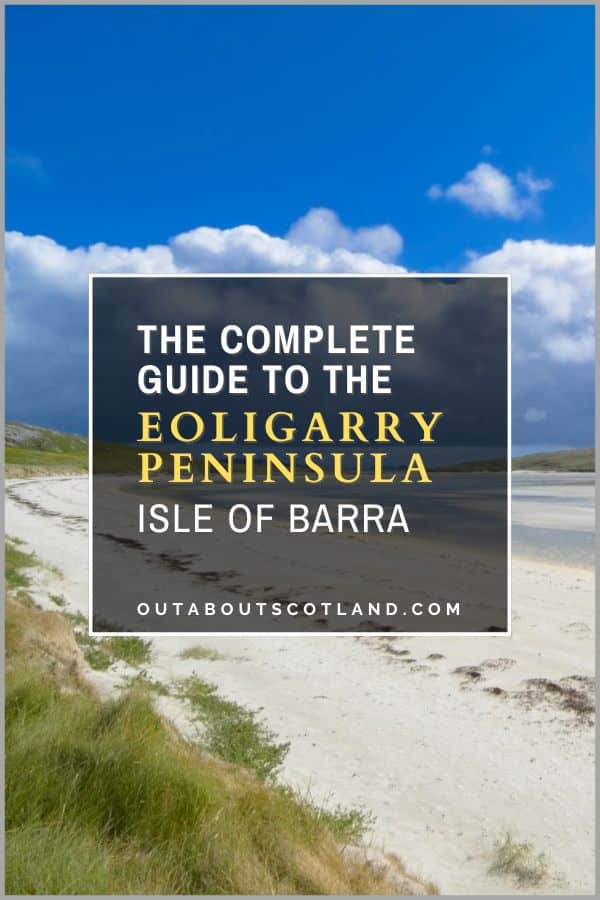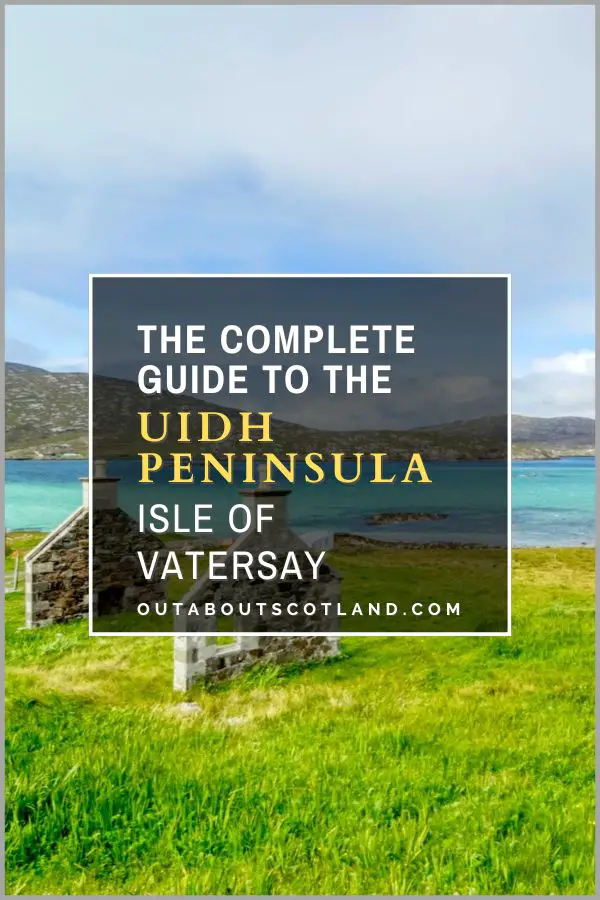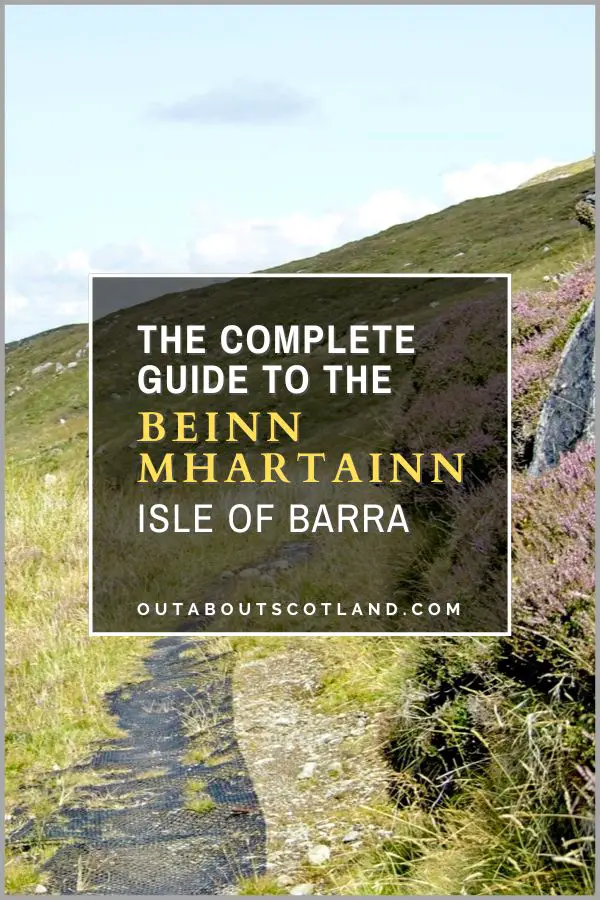Discover the untamed beauty and rich history of the Isle of Mingulay. Once inhabited but now reclaimed by nature, this remote island offers breathtaking landscapes and a wealth of sightseeing opportunities that make it an essential destination for any visitor to the Outer Hebrides.
From the towering sea cliffs teeming with seabirds to the remnants of a once bustling village, Mingulay has a multitude of things to see and do. In this article, we’ll take a look at every aspect of this remarkable island, including how to get there and what it’s like to visit.
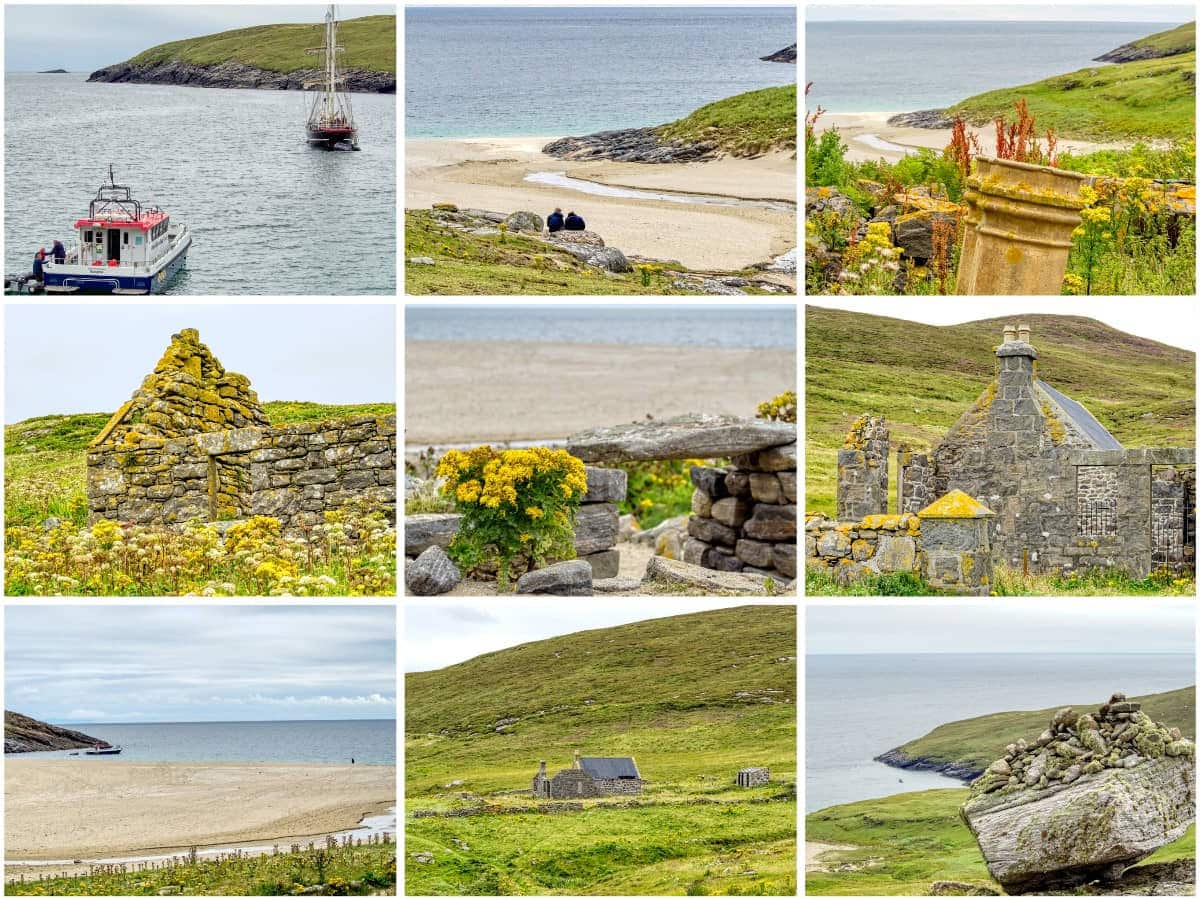
| Address: | Outer Hebrides, HS9 5YW |
| Opening Hours: | The Isle of Mingulay is accessible 24/7, 365 days a year by boat. For tour boat times, see the Hebridean Sea Tours website. |
| Admission Price: | NA |
| Parking: | NA |
| Contact: | Hebridean Sea Tours: email: Info@hebrideanseatours.co.uk, Tel: 01871 817803 |
| Facilities: | None. |
| Photos: | Virtual Tour |
Overview
There are many reasons to visit the Outer Hebrides, from wildlife watching to enjoying lazy beach days, but for me, the highlight has to be exploring the archipelago’s remotest places, and there’s no place more remote than the Bishop’s Isles.
If you haven’t heard of these islands before, they’re the nine islands on the southern tip of the chain, all of which lie south of Barra. Vatersay is the Bishop’s Isles’ most northerly island, and Barra Head (also known as Berneray) and Mingulay are its most southern isles.
Of these islands, only Vatersay is easy to get to thanks to the Barra causeway, with the rest being only accessible either by private boat or by organised tours that operate from Eriskay and Barra. These tour boats moor up in Mingulay Bay, which has a beautiful beach that offers superb views of the ruined village and the surrounding hills.
Though climbing up the steep hills can be tricky for anyone with mobility problems, exploring the beach is an enjoyable alternative activity, making a boat tour of Mingualy worthwhile for the majority of people no matter their age.
Mingulay itself is only 2.5 square miles in size and has absolutely no facilities on it so a brief afternoon visit is more than enough time to see the highlights, though it’s also possible to camp overnight which is the preferred option for rock climbers who head there throughout the year to scale Mingualy’s formidable 700-foot sea cliffs.
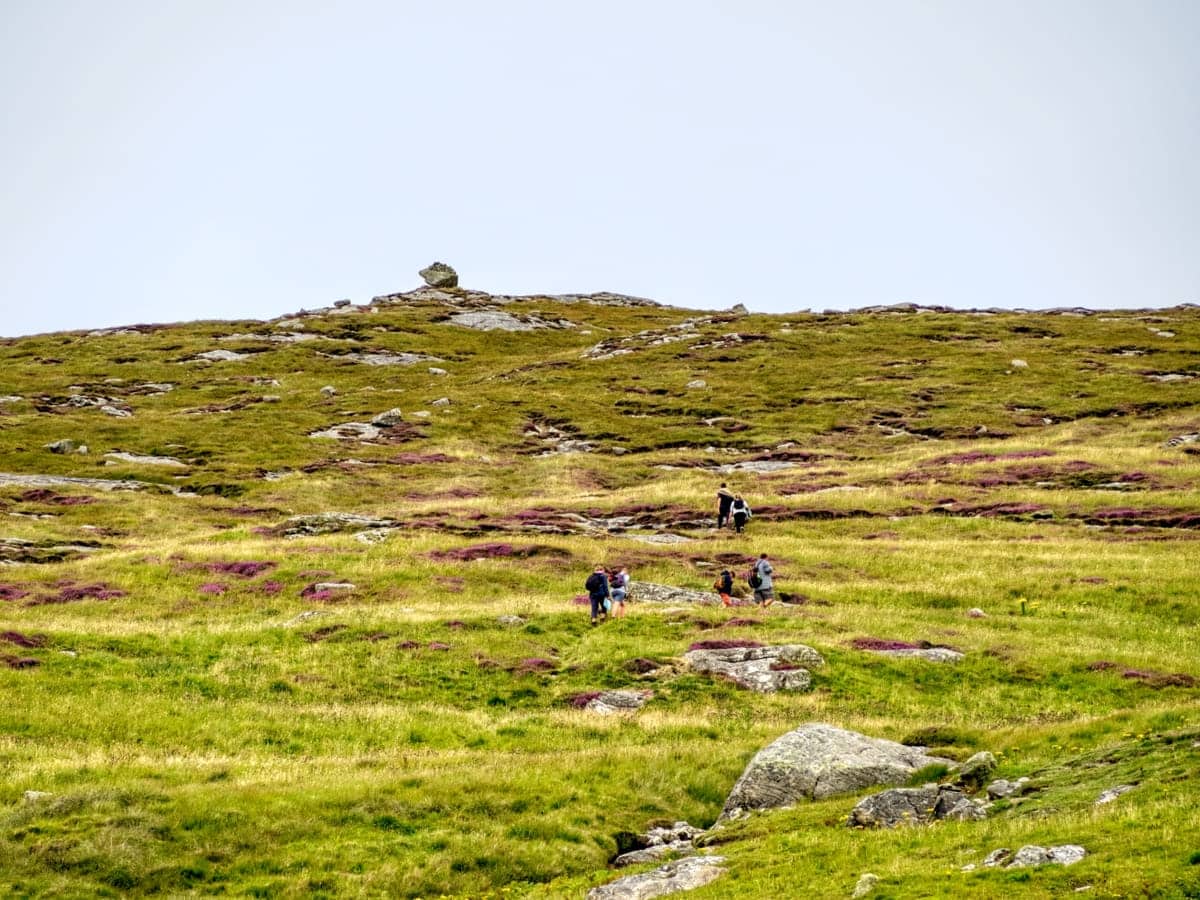
There are two large hills – Carnan (896 feet) and Hecla (719 feet) – on the island which offer a good hike for visitors, as well as Macphee’s Hill (734 feet) which has an interesting story attached to it. The tale concerns a rent collector named McPhee who, upon his arrival on the island, discovered the entire population had perished from an unknown disease.
Fearing a plague, his shipmates abandoned him on the island to prevent any illnesses from being brought back to the main settlement on Barra. McPhee managed to survive on his own on the island for an entire year, during which time he climbed the hill every day in the hope of being rescued. When he was eventually brought home, he was granted land on Mingulay by the chief of Clan MacNeil of Barra, and the hill was forever given the name of ‘McPhee’s Hill’.
The island was eventually resettled, and at its height in 1891, it had 142 people living on it, with the men working the sea as fishermen and the women mostly employed as clothmakers. However, due to the rise in migration to the mainland and overseas in the early 1900s, Mingulay’s 2,000-year period of continuous inhabitation eventually came to an end, with the last inhabitants departing for a new life in 1912.
Following its abandonment, the island was mostly used for grazing sheep and was sold to various owners until 2000, when it was finally acquired by the National Trust for Scotland, which maintains ownership to this day.
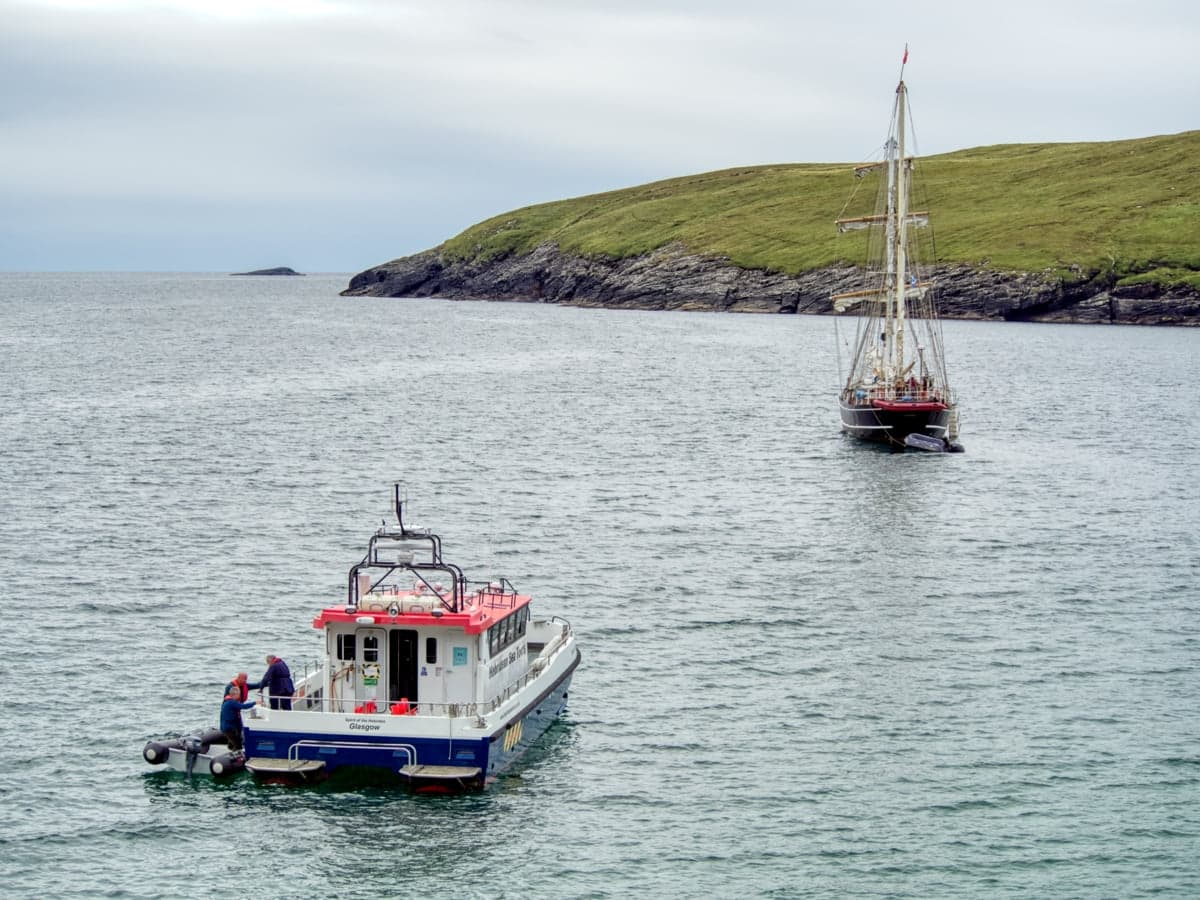
Boat Trip to Mingulay
A boat trip to Mingulay offers an unforgettable experience on a journey that provides an opportunity to see the island’s dramatic cliffs, its historic village, and the wildlife that thrives in one of Britain’s wildest places.
The two main operators are Uist Sea Tours (Eriskay) and Hebridean Sea Tours (Barra), but it’s the latter that’s mentioned in this article. The day starts at 10 am at the Castlebay marina on Barra with a quick safety brief, after which you clamber aboard the ‘Spirit of the Hebrides’ tour boat for the 30-minute sail to Mingulay.
The boat is a good size and feels very stable throughout the journey, even though the sea around Mingulay is renowned for being rather choppy, but I do recommend picking up some seasickness tablets (link to Amazon) before leaving home as the sea around the Bishop’s Isles can turn quite choppy very quickly.
Thankfully, there are big comfy seats inside the cabin, but unless it’s raining you’ll no doubt want to stand outside on the bow or stern so you can admire the amazing scenery as the boat thunders its way past the islands of Sandray and Pabbay.
Once at Mingulay the tour boat moors just offshore of a gorgeous sandy cove on the eastern side of the island and the crew transports people onto the nearby rocks where they can begin their sightseeing adventures.
It’s a bit of a steep climb up the rocks so wearing boots with sturdy grips on the soles is a good idea, but for those visitors who don’t feel confident making the climb, the crew will try to land them directly onto the beach instead. Once on Mingualy, visitors are free to explore it as much as they like for around 3 1/2 hours, which is plenty of time to hike to the top of McPhee’s Hill and look around the abandoned village.
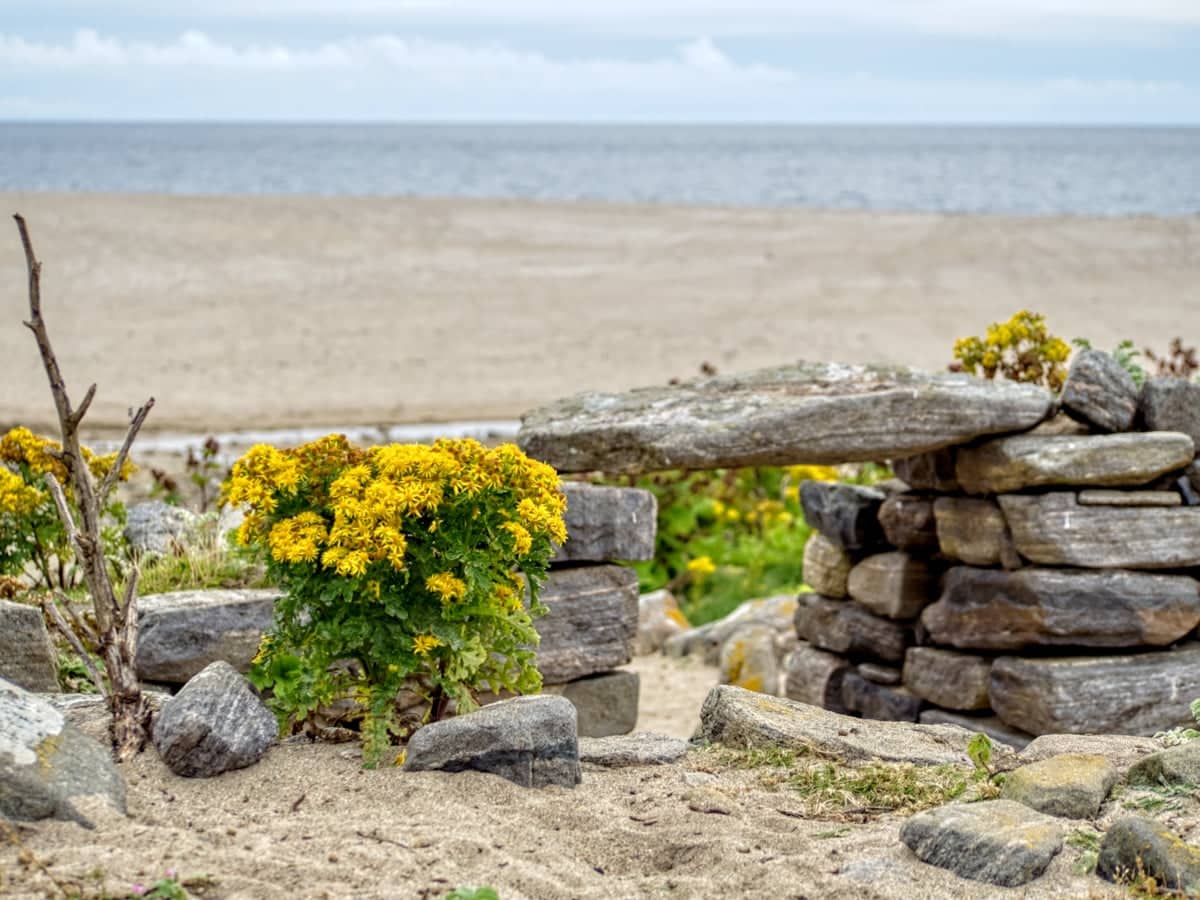
The Abandoned Village
Among the ruins that pepper the landscape of Mingulay, the remnants of the old village are perhaps the most poignant. The schoolhouse and the chapel house are the only two buildings still partially standing, though they both show the effects of time and the harsh weather conditions that drove out their last occupants over 100 years ago.
The remainder of the buildings are nothing more than ruined foundations with walls no more than a few feet high, which are slowly being reclaimed by wild flora, yet it’s still easy to imagine how the village would have looked in its heyday.
It’s a truly beautiful location, and the views across the enchanting Mingulay Bay are nothing short of breathtaking, but I couldn’t help but wonder how different the scene must look in the depths of winter. No matter the weather, Mingulay Bay, with its pristine white-sand beach, is a genuinely amazing sight.
The steeply sloping sands give way to soft grasses and wildflowers interspersed with light grey Hebridean gneiss rocks which combine to create a mesmerising contrast of colours. The shallow bay, meanwhile, reflects the sun off the underlying white sand to give it a beautiful turquoise hue that wouldn’t look out of place on a tropical island.
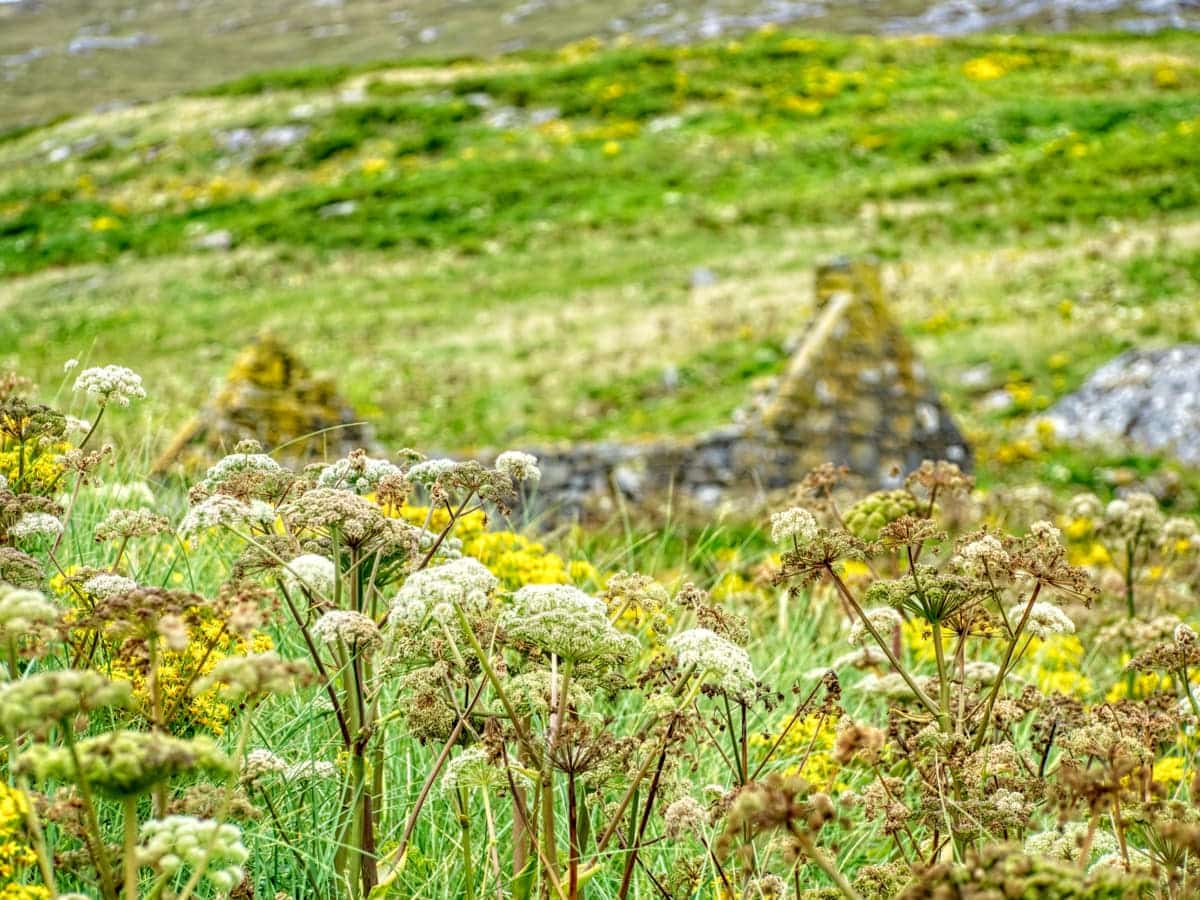
Mingulay’s Natural Heritage
A haven for wildlife, Mingulay boasts a diverse array of flora and fauna. The island is an important breeding ground for various seabirds and the abundance of marine animals that can often be seen offshore is a spectacle in itself.
Visiting Mingualy with a pair of binoculars (link to binocular reviews) is essential as there’s a good chance of spotting seals, orcas, dolphins and even sea eagles as well as the famous puffins that thrive around the steep cliffs on the island’s western side.
As for plant life, it’s typical of almost all the islands in the Outer Hebrides, with heather, mosses, sedges, grass, and bracken covering the majority of the landscape, especially on the southern side, which is covered with heather and boggy moorland, which combine to make it particularly hard work to walk through.
For those who want to explore as much of the island as possible in the time given, I personally recommend sticking to the paths that wind through the remnants of the old village before heading up the slopes of the hills immediately to the west and north and then back down to the bay to admire the view from the beach.
This wee wander will take around 3 hours, which leaves plenty of time for a slow walk back to the rocks near the anchored tour boat. The crew will pick you up from there and give you a cup of tea and a biscuit before sailing around the southern side of Mingulay to see the sea stacks and caves, and then the breathtaking natural arch on the western side of the island.
It takes around one hour to view the cliffs and coves of Mingulay and another 30-45 minutes to sail back to Castlebay, so your day should finish around 4 p.m., depending on the weather conditions.
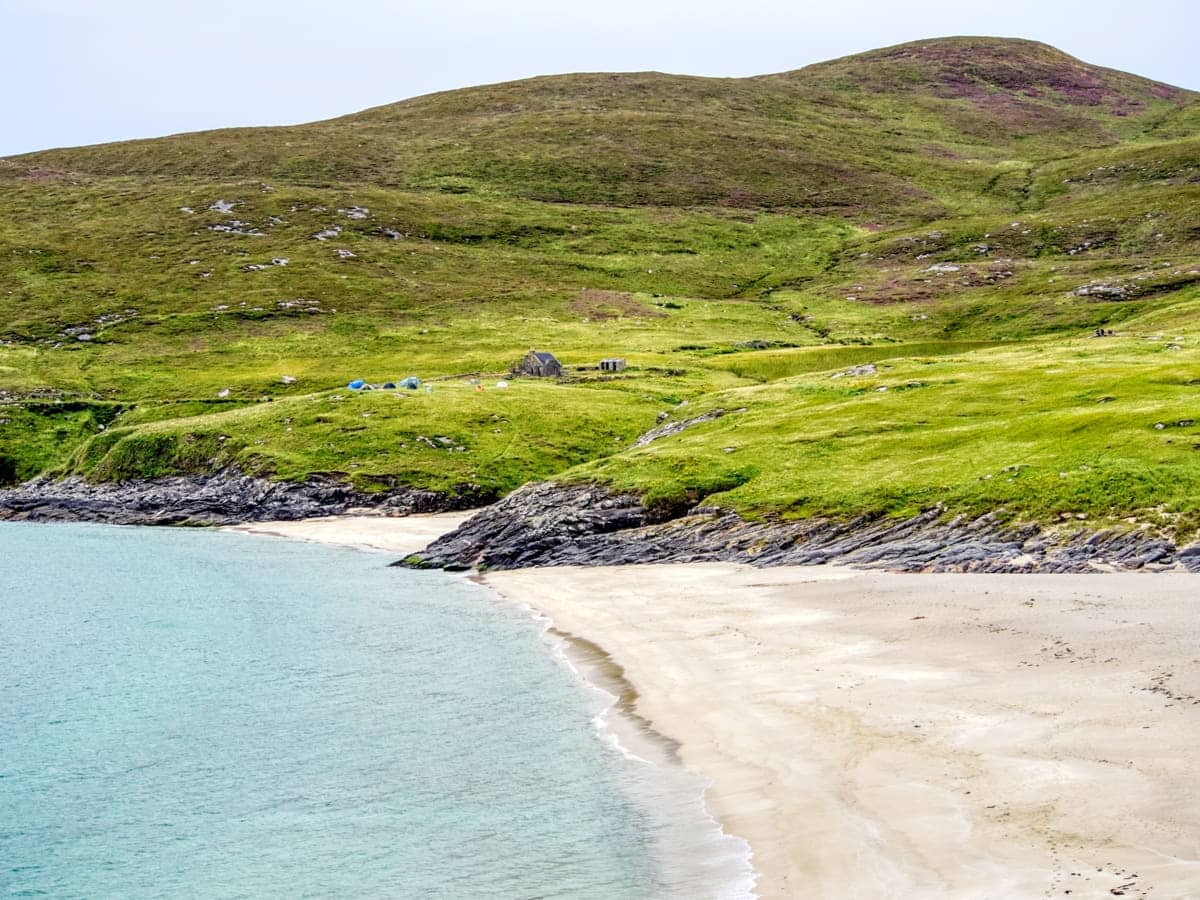
The Highlights
1: No visit to Barra can be considered complete without taking a tour of the nearby Isle of Mingulay. The sail to the island is an adventure in itself, as you’ll have the chance to see whales, dolphins, basking sharks, and seals during the 30-minute voyage.
2: Mingulay is a great location for spotting seabirds, especially on the western side of the island. Expect to see large populations of guillemots, kittiwakes, fulmars, petrels, puffins, terns, shearwaters, and various species of gulls. This is one destination in Scotland where taking a camera is an absolute necessity.
3: As enjoyable as walking around the island is, the most memorable part of a tour has to be sailing around the enormous sea stacks on the southern side. The tour boat operator will (as long as the weather allows) take you deep into the heart of these monumental crevices which are teeming with wildlife.
Visiting Tips
1: Joining a tour boat to Mingulay is not advisable for anyone with serious mobility problems due to the difficulties of mooring up. The tour boat anchors offshore and then takes visitors onto the island via a dinghy which berths alongside a fairly steep rock outcrop. Climbing up and down the rock faces is difficult, especially when they’re wet.
2: There are no footpaths on the island so you’ll have to walk along rough tracks and bare rock, as well as large stretches of boggy moorland. I suggest wearing waterproof walking boots (link to recommended boots) even in the height of summer. Pack a pair of flip-flops as well, as the beach is a great place to paddle about while waiting to be picked up again.
3: If you intend to visit Mingulay with your own boat you must only go ashore in an open tender to prevent the possibility of stowaway vermin getting onto the island which could decimate the native wildlife.
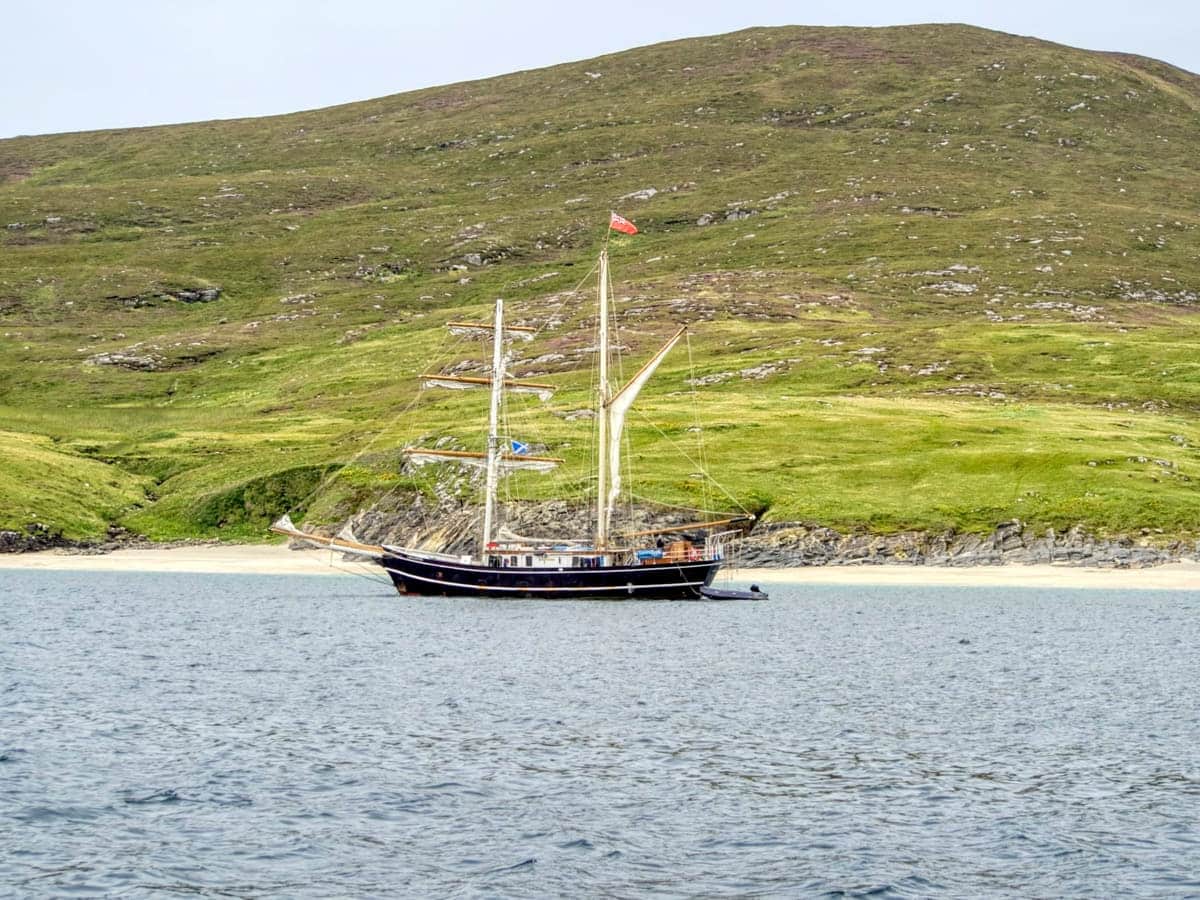
Things to Do
Birdwatching Extravaganza: Mingulay is a paradise for birdwatchers. Home to colonies of puffins and a significant number of other bird species like razorbills, fulmars, and kittiwakes that nest in their thousands on some of the highest cliffs in the UK, the island offers a unique opportunity for birdwatching.
Historical Exploration: Mingulay’s abandoned village offers a glimpse into its past. The village, which had over 140 residents in 1900, was empty by 1912. Today, you can wander around the ruined stone-built houses and discover the remnants of a chapel that overlooks a picturesque sandy bay.
Sailing Adventure: The island’s rugged coastline, dotted with sea stacks and caves, is perfect for a boating adventure. Sail around the island, explore hidden sea caves, and admire the towering cliffs from a unique perspective. With the opportunity to see seals, dolphins, and occasionally whales, this is a must-do destination for any boat owner.
Hiking the Cliffs: Mingulay offers an unparalleled hiking experience, especially along its western side which has some of the highest sea cliffs in the British Isles. Walk to the top and enjoy the stunning panorama of the far southern edge of the Outer Hebrides. This exhilarating adventure will leave you with unforgettable memories and stunning photographs.
Rock Climbing: The dramatic sea cliffs of Mingulay are a paradise for rock climbers as these 500-foot cliffs are almost vertical in many places. Please take note that only very experienced climbers should attempt this activity, preferably as part of a professionally organised group tour.
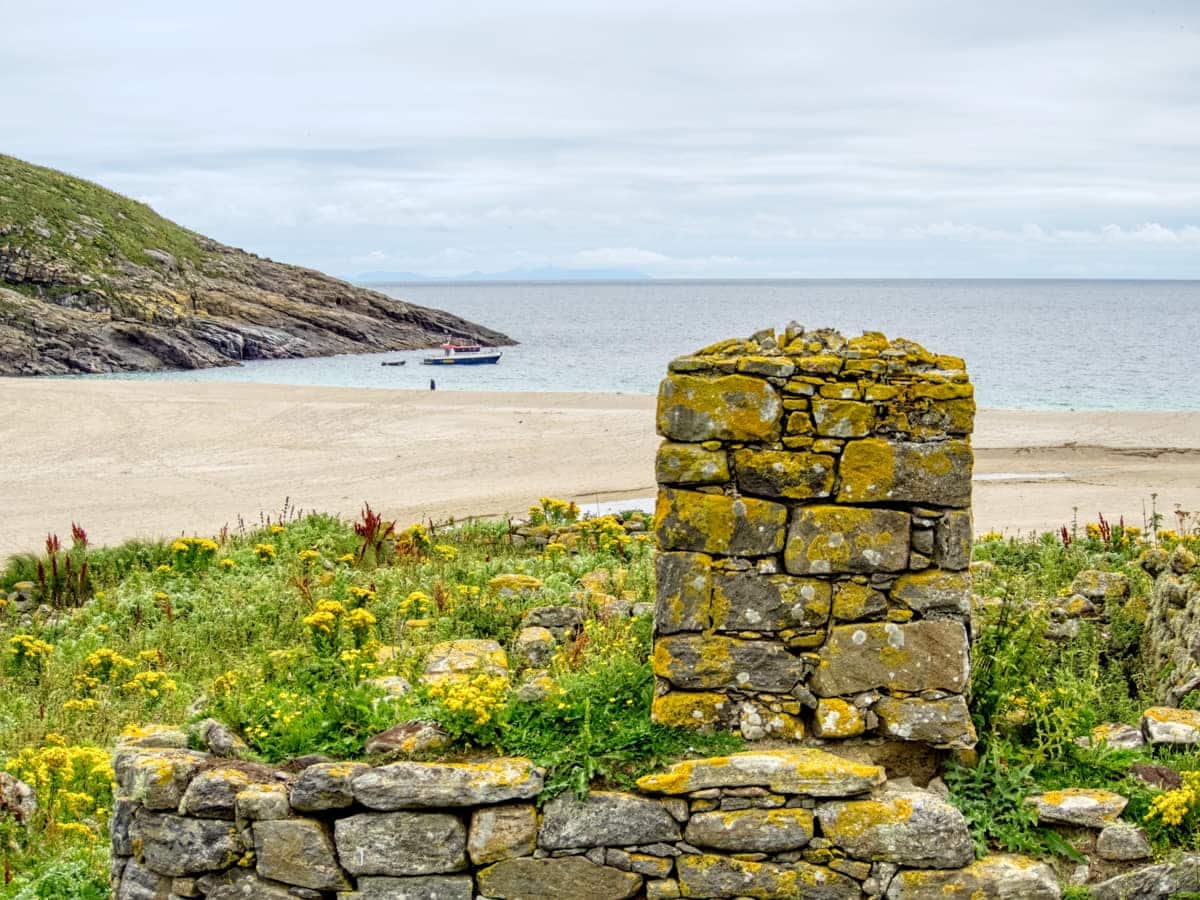
Things to Do Nearby
Vatersay. Address: Isle of Barra, HS9 5XN.
Just a few minutes’ drive west of Castlebay is the short causeway that connects Vatersay to Barra. Though small at 3.75 square miles, Vatersay is a must-visit for anyone exploring Barra as it features two exceptional white sand beaches—Traigh Shiar and Traigh a Bhaigh—that are both set within wide, shallow bays.
Heaval. Address: Isle of Barra, HS9 5UH. Distance: 1.6 miles.
Heaval is the highest point on Barra at 1,257 feet. This hill presents a moderately easy climb to the summit from Castlebay, which shouldn’t take more than 3 hours to complete on a return hike. Once at the summit, hill walkers can enjoy stunning views across Barra to South Uist.
Kisimul Castle. Address: Castlebay, Isle of Barra, HS9 5UZ.
Kisimul Castle is located on a small island within the harbour of Castlebay on the Isle of Barra. The castle is managed by Historic Environment Scotland, which operates boat tours from the village jetty between April and September.
Barra Head. Address: Isle of Barra, HS9 5YW.
Barra Head – also known as Berneray – is the southernmost island of the Outer Hebrides. This wild and uninhabited island is a popular destination for tourists who go there to climb the steep hill to the Barra Head lighthouse which is the highest lighthouse in the UK at 693 feet above sea level.
The Hebridean Way.
The Hebridean Way is a 185-mile touring route that spans the inhabited islands of the Outer Hebrides, starting on the Isle of Vatersay and finishing on the Isle of Lewis. Visitors to Barra can complete the first stage by setting off from Vatersay, crossing the causeway, and following the A888 around Barra to the village of Ardmhor, where they can then catch a ferry to the Isle of Eriskay.
Frequently Asked Questions
Does anyone live on Mingulay?
No, there are no permanent residents on Mingulay today. A thriving community once called Mingulay home, but since the last occupants left in 1912, it has been vacant. Despite its lack of permanent residents, it’s a popular destination for tourists who visit it for its wildlife and rock climbing opportunities.
Why was Mingulay abandoned?
The Isle of Mingulay was abandoned in 1912 due to a combination of factors. The main reasons were harsh living conditions and difficulties in sustaining livelihoods due to the declining fishing industry, which was the primary source of income for the inhabitants.
The island is isolated, making it difficult to access basic amenities and services, and there was also a general trend of depopulation in the Scottish islands during the early 1900s as people moved towards mainland Scotland and other countries in search of better opportunities.
Who owns the island of Mingulay?
The National Trust for Scotland currently owns the island of Mingulay, which it purchased in 2000 to oversee and protect the island’s natural and cultural heritage. The uninhabited island now serves as a haven for seabirds and other wildlife.
What is there to do on the island of Mingulay?
The Isle of Mingulay is rich in wildlife and history. Being uninhabited since 1912, it’s an excellent destination for nature lovers who can explore its dramatic cliffs, which are home to numerous seabirds, including puffins and guillemots.
Other things to do include visiting the remains of the deserted village and the ruins of St. Ronan’s Church, as well as Mingulay Bay, which is a beautiful spot for a walk. Sea kayaking and boat trips around the island are also popular, as they offer the chance to spot seals and dolphins.

